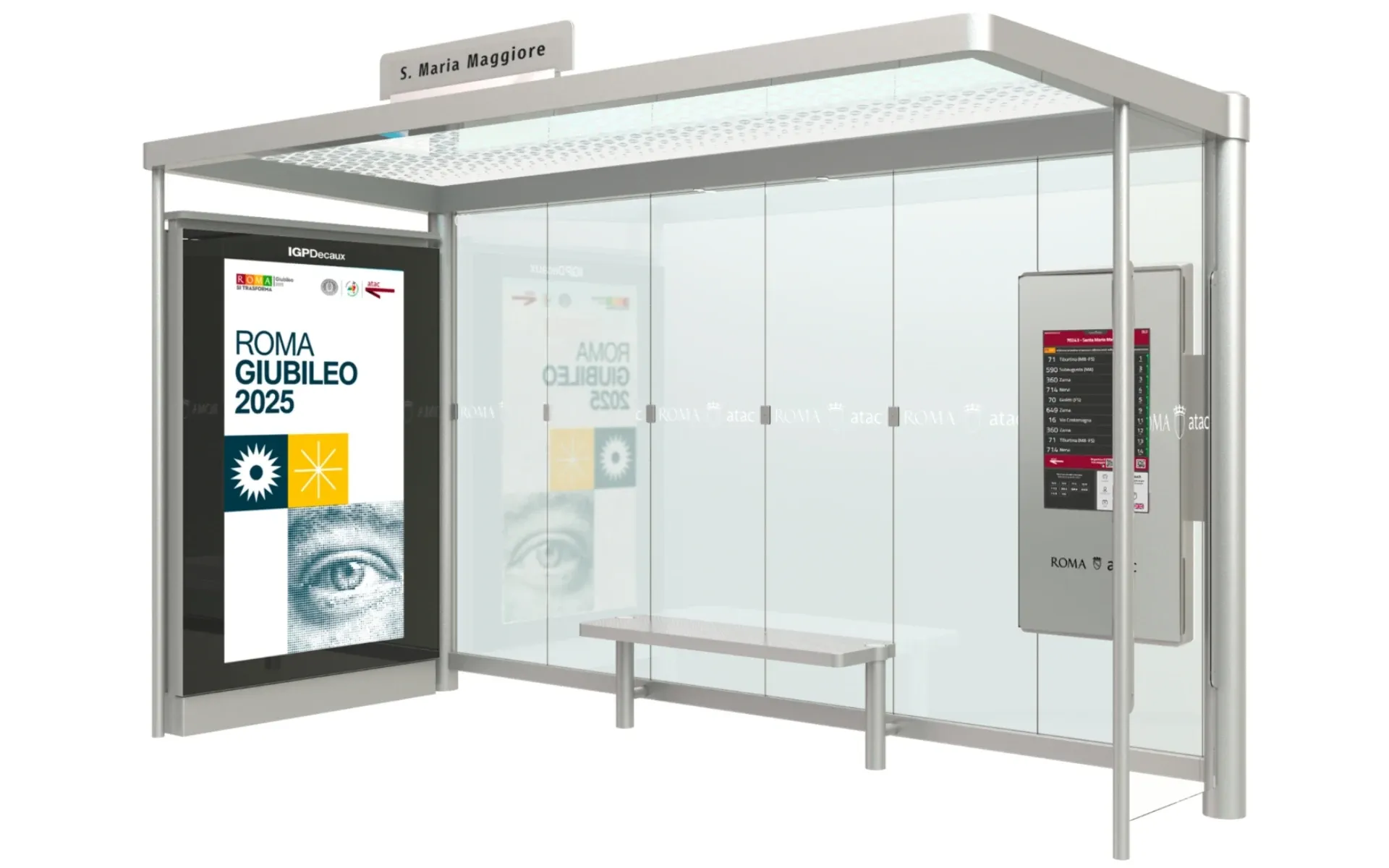Rome expands public transport with 9,600 new digital bus shelters
Rome's transport company ATAC awards 11-year contract for bus shelter modernization, including 747 digital panels and accessibility features.

The Italian capital Rome is set to transform its public transport infrastructure with a comprehensive modernization of its bus shelters and stops. According to ATAC, Rome's public transport company, the contract was awarded to IGPDecaux on December 6, 2024, marking the start of an extensive urban mobility enhancement project.
The 11-year agreement encompasses the upgrade of 9,600 existing structures throughout Rome, a city that welcomed 50 million tourists in 2023. According to the contract specifications, the project includes the refurbishment of 1,400 bus shelters and 8,200 bus stops, with plans to install more than 1,900 advertising panels, including 747 digital displays.
The technical specifications of the project detail three main components. According to ATAC's documentation, these include 435 "Eterna" bus shelters equipped with 501 digital touch screens, 405 electronic bus stops featuring digital panels with audio systems, and 14 bus terminals complete with office facilities and restrooms for ATAC staff use.
A significant aspect of the modernization effort centers on accessibility. According to Eugenio Patanè, Councilor for Mobility of Roma Capitale, the project introduces a pioneering navigation application for visually impaired individuals, making Rome the first Italian city to offer such a service without charge.
The financial structure of the agreement employs a hybrid model, with capital expenditure funded through a combination of public subsidies and advertising revenue. This approach aims to balance public service requirements with commercial viability.
ATAC Managing Director Alberto Zorzan highlighted the complex nature of the implementation process: "Given the unique context of Rome, everything has to be carefully considered. The overall value of the intervention is not just in the aesthetic, but also the attention dedicated to their installation."
The timing of the project aligns with Rome's preparation for the 2025 Jubilee, with initial installations having commenced on December 6. The modernization effort forms part of the broader "Piano Fermate" initiative, which seeks to enhance public transport utilization and urban environment quality.
Technical specifications indicate that the new infrastructure will operate using renewable energy sources, both in the production phase and for powering the installed systems. The digital displays will provide real-time transport information in both Italian and English, alongside details about cultural sites and community events.
The implementation process required extensive coordination with various regulatory bodies due to Rome's historical significance. According to ATAC, each installation location undergoes specific suitability tests and must receive authorization from institutions overseeing artistic and cultural heritage preservation.
IGPDecaux, a company owned 60% by JCDecaux SE and 40% by the du Chène de Vère family, secured the contract through a competitive tender process. The agreement represents a significant expansion of the company's presence in Italy, where it already operates in several major cities including Bologna, Florence, Genoa, Milan, Naples, and Turin.
The modernization program aims to address multiple urban challenges simultaneously: improving public transport accessibility, enhancing information delivery to passengers, and updating street furniture while preserving Rome's architectural character. The digital infrastructure allows for dynamic content updates and real-time information dissemination, marking a substantial technological upgrade for the city's public transport system.
This extensive urban infrastructure project reflects the increasing digitalization of public transport systems in major European cities. The integration of digital displays and accessibility features indicates a shift toward more inclusive and technologically advanced public transport infrastructure.

